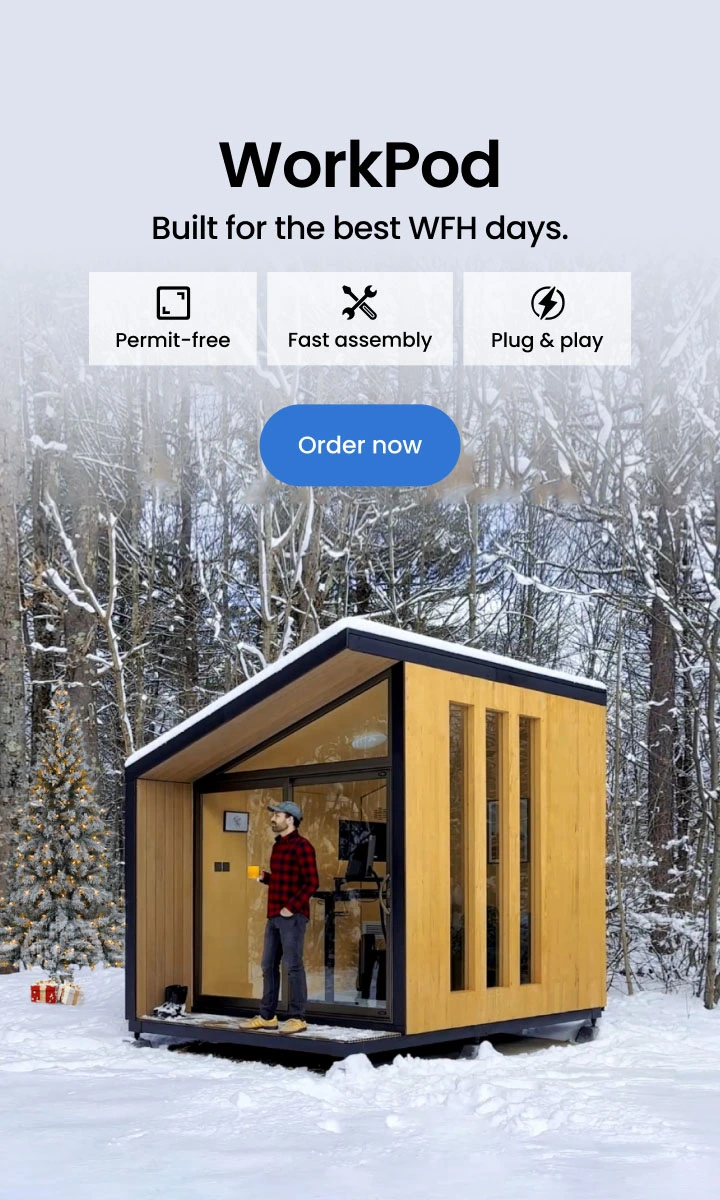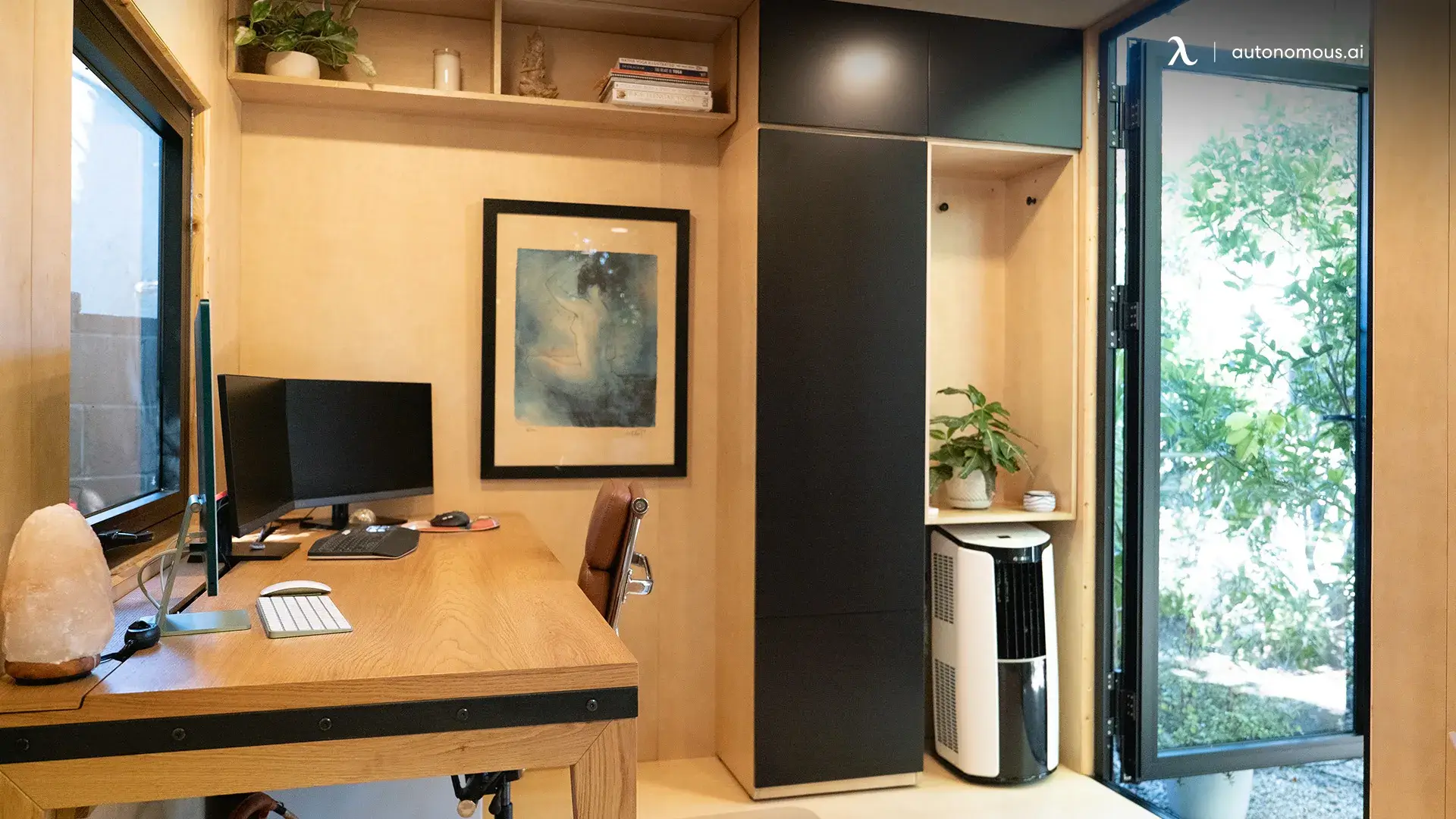
ADU Appliances Checklist for Efficient Small Homes
Table of Contents
When designing a compact home, choosing the right ADU appliances is just as important as the structure itself. If you're considering adding a backyard ADU, it's important to select the right appliances that will fit within the space. Because accessory dwelling units are smaller than traditional homes, every appliance must serve a purpose, fit the space efficiently, and meet essential ADU kitchen requirements. Understanding the ADU meaning in real estate is also crucial to help ensure that your unit meets legal and investment expectations. Whether you’re building an ADU for guests, renters, or personal use, the right setup can make the difference between a cramped unit and a functional, livable home.
What Makes an Appliance ADU-Friendly?
ADUs typically have less square footage, so appliances must balance functionality, efficiency, and smart use of space. Homeowners often prioritize:
- Compact design: Slim refrigerators, two-burner cooktops, and under-counter dishwashers are common choices.
- Energy efficiency: Lower power draw helps keep utility bills manageable and prevents overloading circuits.
- Multi-functionality: One appliance can often serve multiple purposes — for example, a combination washer/dryer or an over-the-range microwave with built-in ventilation.
- Low noise and heat output: Essential for small spaces where sound and temperature spread quickly.
Ultimately, functional appliances for adults living in ADUs need to be practical, quiet, and easy to maintain. When choosing appliances, it's also crucial to work with a reliable ADU construction company to ensure your space is designed efficiently.
If you're expanding an existing structure, a family room addition to the back of the house may also influence appliance layout and design.
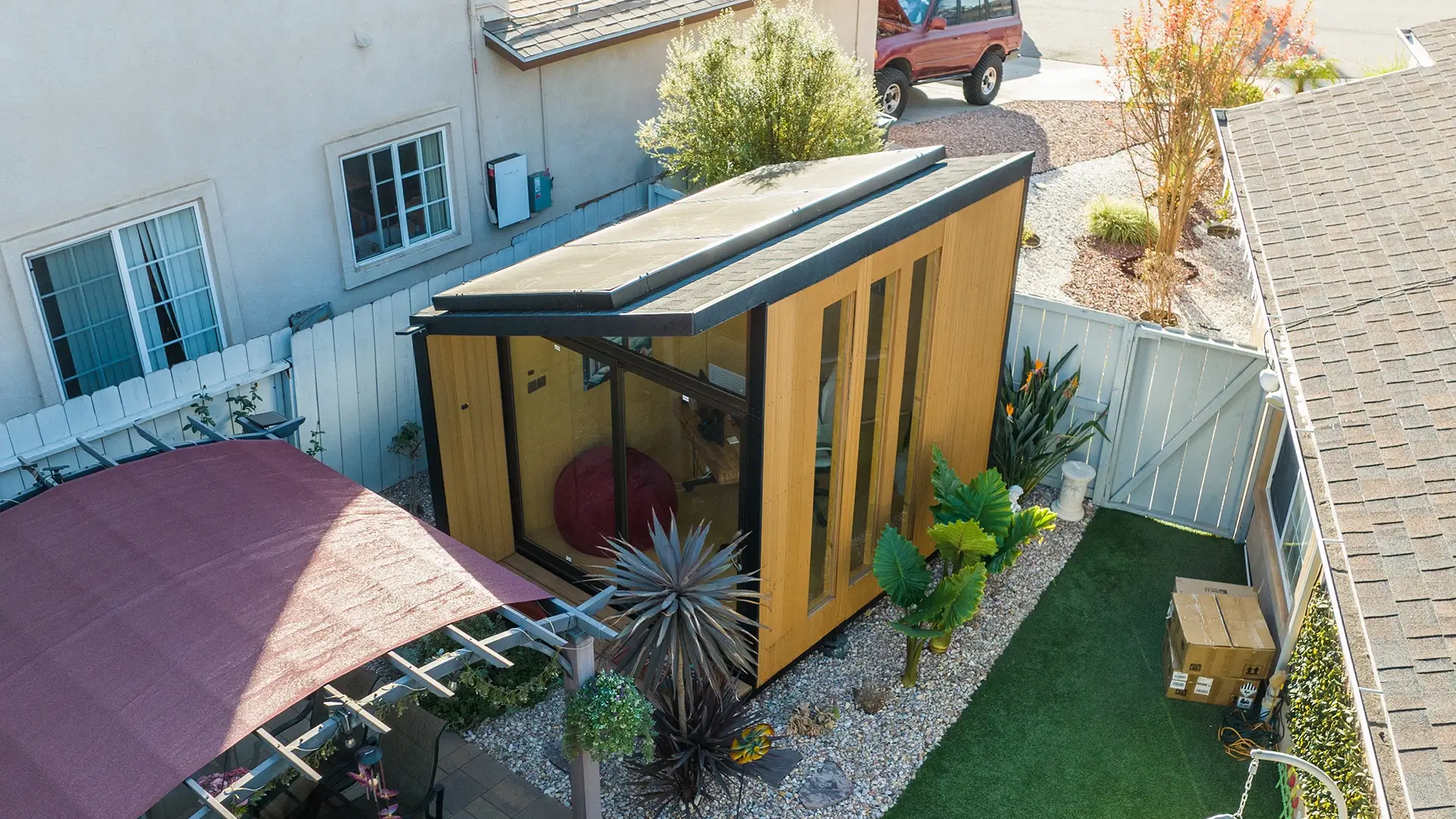
ADU Kitchen Requirements
Many homeowners ask: “Does an ADU have to have a kitchen?” or “Does an ADU need a kitchen?” In most states, the answer is yes — at least a functional cooking space is required for a unit to qualify as a legal accessory dwelling. For more detailed information on legal aspects, including building an ADU without permits, visit our guide on ADU permits or learn more about the risks of ADUs without permits.
Typical ADU kitchen requirements include:
- A cooking appliance (range, cooktop, or microwave with built-in vent)
- A sink with hot and cold water
- A refrigerator
- Adequate counter space
- Power supply and plumbing to support appliances safely
Local regulations may vary, but generally, even a small ADU kitchen must provide the basic amenities needed for independent living. Additionally, it's important to consider the ADU foundation requirements for a stable and functional space that supports your kitchen appliances and utilities.
Key ADU Appliances to Consider
Choosing the right ADU appliances is a crucial step in creating a comfortable and functional living space. Since accessory dwelling units often have smaller footprints, every appliance needs to be selected thoughtfully to balance efficiency, practicality, and comfort. Whether you're planning for long-term renters, short-term guests, or your own use, investing in the right ADU kitchen appliances can transform a small space into a fully livable home.
1. Refrigerator
A refrigerator is essential for any ADU kitchen. Unlike standard homes, ADUs typically benefit from slim or under-counter models that maximize floor space while still providing enough storage for daily use. Many homeowners choose 24-inch units, which fit neatly into smaller kitchen layouts without compromising functionality. Compact refrigerators also use less energy, which helps keep utility costs low. For units meant for one or two people, this is often more than sufficient.
2. Cooktop or Range
One of the most common questions is “Does an ADU have to have a kitchen?” or “Does an ADU need a kitchen?” — and in most cases, the answer is yes. That means a cooking appliance is required. For space-limited kitchens, a two-burner cooktop (induction or gas) is often the best choice. It provides enough cooking power for daily meals while leaving room for countertop prep areas. In some cases, homeowners choose a small range that combines an oven and cooktop in one, giving residents more flexibility.
3. Microwave with Ventilation
A microwave that doubles as a range hood is a clever way to save space in ADUs. These models offer two functions: heating food and ventilating the cooking area. Since smaller kitchens can get warm quickly, proper shed ventilation is essential to keep the unit comfortable. This single appliance eliminates the need for a bulky range hood, which is a big plus in a compact floor plan.
4. Dishwasher
While not legally required in most ADU kitchen requirements, a compact dishwasher can make the space feel more like a full home. Slimline models (around 18 inches) or dish drawers are designed specifically for small households. They use less water and energy while keeping countertops clear of clutter. For homeowners who plan to rent out their ADU, this can also be a small but impactful upgrade that boosts appeal.
5. Laundry Appliances
Washer and dryer units take up valuable square footage, so stackable or combo units are popular in ADUs. A washer/dryer combo is particularly efficient, offering two functions in one appliance. These models are ventless in many cases, making them easier to install without extensive ductwork.
6. Water Heater
Tankless water heaters are a top pick for ADUs because they save space and deliver hot water on demand. Traditional water tanks can be bulky, while tankless models fit into tight utility closets or wall mounts — perfect for compact layouts. For those planning the ADU bathroom, ensuring you have an efficient water heater is key, and tankless systems are ideal for small spaces. If you're also considering a tiny house water system, similar space-saving and energy-efficient solutions can be used to meet your needs.
7. Heating and Cooling Systems
Climate control is another essential consideration. Mini-split systems are ideal for ADUs because they provide heating and cooling in one compact unit. They’re energy-efficient, quiet, and don’t require ducts, making installation much simpler than central systems. If you're looking for alternative solutions, a solar heater for shed can be an efficient way to heat your ADU without additional power costs.
For cooling, an AC for shed can be a great option to maintain a comfortable temperature. Alternatively, you might consider adding an air-conditioned shed for a more portable and flexible solution.
8. Small Kitchen Extras
Beyond the required appliances, small details can make a big difference. Under-cabinet lighting, compact range hoods, countertop induction burners, or even a small portable oven can help create a highly functional kitchen setup without crowding the space. For residents, these functional appliances for adults turn a tiny kitchen into a usable, comfortable environment.
To make your ADU even more livable, consider tips on improving your ADU interior, or check out how to manage ADU sewer connection requirements in your area.
Tips for Selecting & Sizing ADU Appliances
Choosing the right ADU kitchen appliances isn’t just about picking small versions of full-size products. Here are a few practical tips:
- Plan with your floor layout in mind. Measure twice, install once. For example, understanding tiny house dimensions or she shed size can help guide your layout and appliance choices. If you’re opting for a portable ADU, make sure your appliances are adaptable to flexible setups.
- Match your electrical and plumbing capacity with appliance specs to avoid costly upgrades. For instance, consider how utilities will be integrated into a 500 sq ft ADU or 200 sq ft ADU, ensuring your appliances won’t overload the system. You may also want to explore the 150 sq ft ADU for space-saving solutions.
- Look for multi-use options to minimize clutter and maximize function. For instance, an over-the-range microwave not only saves space but also provides ventilation.
- Prioritize quiet operation, especially for open-concept ADU layouts. If you're considering a prefab ADU with loft, these spaces benefit from appliances that operate quietly and don’t disrupt the living environment.
- Future-proof your choices. Even if the unit is for occasional use now, it should support full-time living later. For a long-term solution, appliances that can be upgraded or replaced with ease are essential. Additionally, consider how the ADU floor plan will integrate with your appliance choices.
- Keep in mind the ADU above garage cost, which can influence appliance selection as you balance cost and functionality.
Functional, efficient appliances help create a space that feels like a real home — not just a scaled-down version of one.
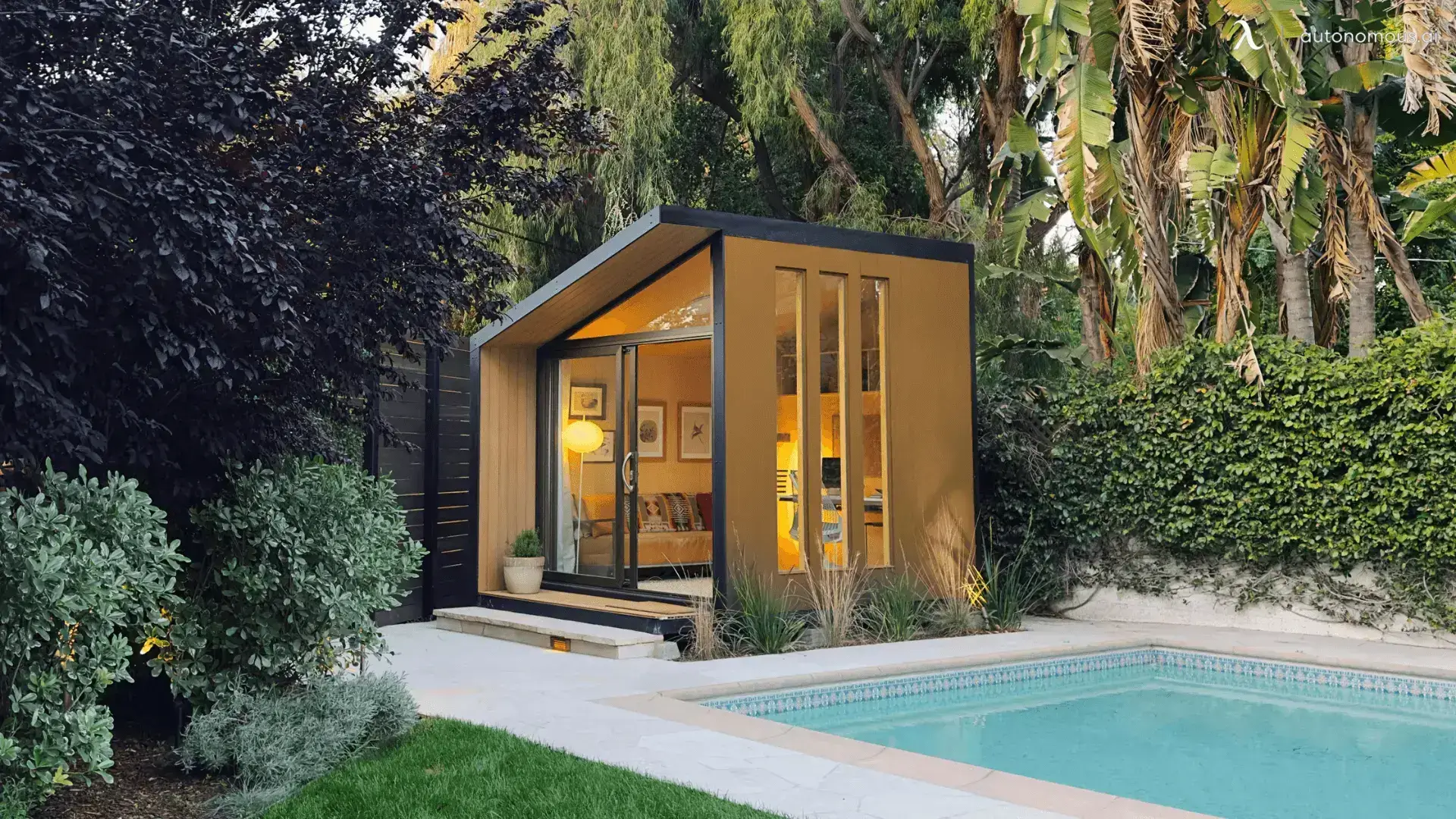
Installation & Infrastructure Considerations
Installing ADU appliances requires more careful planning than in a standard home. Because ADUs have tighter spaces and often lower utility capacities, proper infrastructure is key.
- Electrical Load: Ensure your panel can support multiple appliances running at once. Understanding how to run power to a shed can help when considering your ADU’s electrical needs.
- Plumbing: Position sinks, dishwashers, and washer/dryers close together to simplify plumbing and reduce installation costs. This layout also minimizes the need for long plumbing runs.
- Ventilation: Ventless dryers, microwave hood combos, or ductless systems can reduce the need for complicated vent runs. For ideas on shed ventilation, similar principles can be applied to keep your ADU comfortable and well-ventilated.
- Access & Clearance: Compact doesn’t mean cramped. Leave enough space for doors, vents, and service access to ensure appliances function smoothly and are easily serviced when needed. Consider using insulated sheds with electricity for added protection and energy efficiency.
Early planning helps avoid costly retrofits and ensures every appliance works efficiently in your ADU.
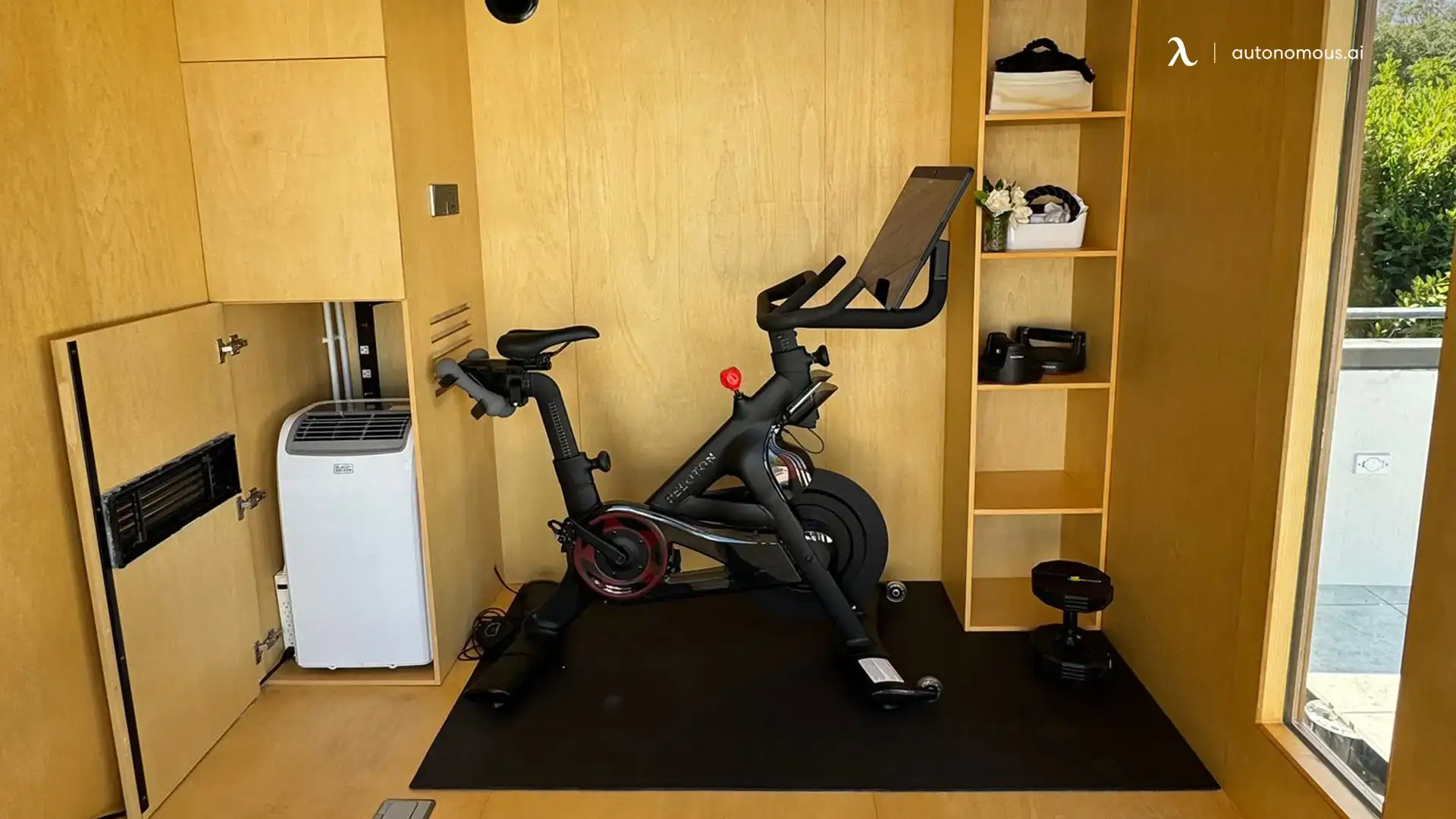
FAQs
Does an ADU have to have a kitchen?
Yes. Most cities require a kitchen in an ADU for it to qualify as an independent living unit. A basic cooking area with permanent appliances is typically part of the minimum standard.
Does an ADU need a kitchen?
Yes. If an ADU doesn’t have a kitchen, it’s usually classified as a guest house or accessory structure rather than a legal dwelling. Including a kitchen ensures the unit meets code and can be rented out.
What are the basic ADU kitchen requirements?
Most ADU kitchen requirements include a refrigerator, cooking appliance, sink with hot and cold water, counter space, and storage cabinets. These elements make the unit suitable for independent living.
What are the best ADU kitchen appliances for small spaces?
Compact and multifunctional appliances work best. Slim refrigerators, two-burner cooktops, combination microwave-hoods, drawer dishwashers, and ventless washer/dryer units are popular choices for small ADUs.
Are compact appliances reliable for ADUs?
Yes. Modern compact appliances are designed for efficiency and durability. They offer the same core functions as standard models but take up less space and use less energy.
Can a microwave be the only cooking appliance in an ADU?
Usually, no. Most building codes require a permanent cooking appliance, such as a cooktop or stove, to meet ADU kitchen standards. A microwave can be a supplement but not the sole cooking solution.
What are functional appliances for adults in an ADU?
Functional appliances for adults include a full-capacity refrigerator, a two- or four-burner cooktop, a quiet dishwasher, an efficient washer/dryer combo, and a tankless water heater. These make everyday living more convenient.
Do ADU appliances affect electrical and plumbing needs?
Yes. Each appliance adds load to the system. Planning your electrical panel capacity and plumbing layout early helps avoid costly upgrades and installation issues later. If you’re considering a prefab ADU, it’s important to account for how these appliances will integrate with the structure. Additionally, understanding the ADU cost per square foot helps you estimate the expenses related to both appliances and the required infrastructure.
What water heater works best in an ADU?
Tankless water heaters are ideal because they save space, heat water on demand, and don’t require large storage tanks. This makes them perfect for small utility closets or wall-mounted setups.
Are there required appliances for an ADU kitchen?
Yes. Most jurisdictions require at least a cooking appliance, refrigerator, and sink. Meeting these requirements ensures the ADU is legally recognized as a livable unit.
Conclusion
The right ADU appliances can turn a small structure into a fully functional living space. By focusing on compact, energy-efficient, and functional appliances for adults, you can design an ADU kitchen that meets legal requirements and provides everyday comfort. Whether you’re building a rental unit or a personal retreat, planning your ADU kitchen appliances early in the design process ensures a smooth installation and a space that feels like home. If you're exploring ADU options or debating ADU vs guest house, or even considering the differences between a JR ADU vs ADU, knowing your options can help you make the best decision. Additionally, for those torn between a tiny home vs ADU, both offer unique advantages that can fit different needs and space requirements.
Spread the word
.svg)




